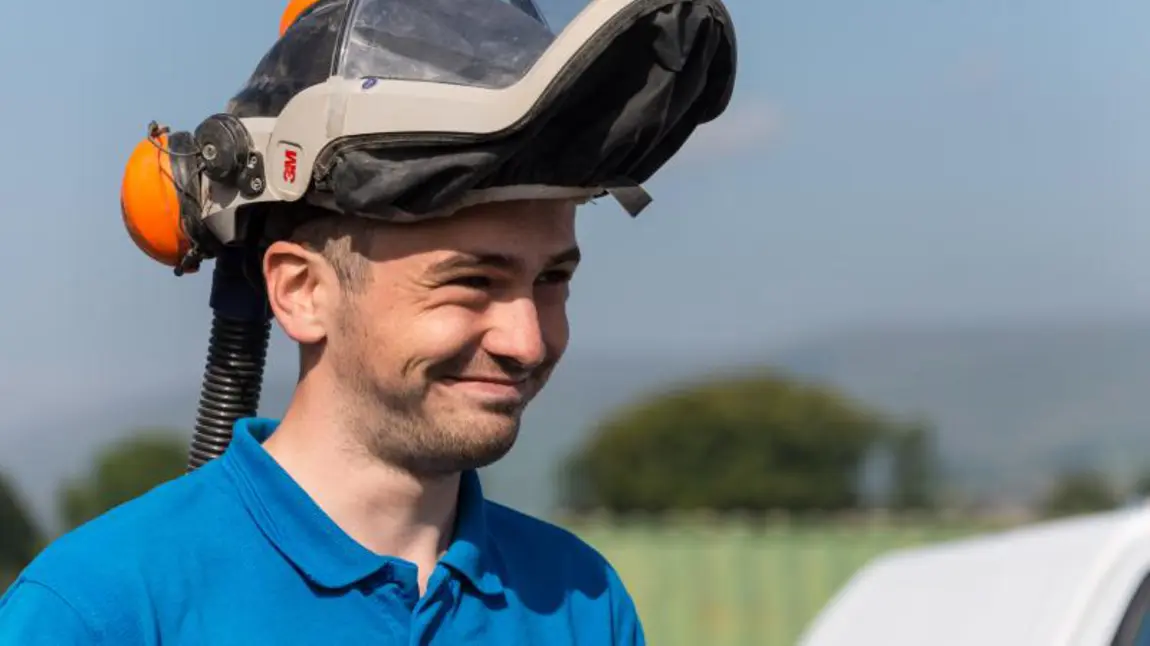Changing lives: Angus helps keep our canals flowing

At 16 Angus decided school wasn’t for him. He felt constrained by having to be inside all day and demotivated at what he saw as “working towards a certificate that didn’t seem to mean very much".
He started to pick up odd jobs working on building sites but being under 18 restricted the amount of work he could get. “I just realised that I wasn’t getting anywhere so I ended up having to jack in the labouring,” he says.
Like many young people in his position, Angus had no idea what to do next. In search of direction, he took the plunge and decided to move away from his home on Skye to live with family in Edinburgh.
The Canal College
At this point Angus had never seen a canal in his life but when he heard about an opportunity to join the HLF-supported Canal College, he felt it was a chance to fulfil his dream of working outside.
The Canal College, run by the Scottish Waterways Trust, had received a £195,000 HLF grant to organise a heritage skills training and employability programme for young people not in employment, education or training in deprived areas in Falkirk and Edinburgh. 162 young people attended Canal College over the two-year programme.
“It helped me out a lot not only on the practical side but with interview skills and CV building as well,” says Angus.
“I was going out, getting my hands dirty – putting in benches and working on community gardens. I just really enjoyed being out and about.”
Apprenticeship with Scottish Canals
As he was about to leave canal college after 14 weeks, Angus heard about a training placement with Scottish Canals, supported by HLF’s Skills for the Future programme. He applied and was offered the position. That led to a full three-year apprenticeship and Angus is now their only in-house stonemason, responsible for monitoring and repairing 60 miles of waterways in and around Edinburgh and Glasgow.
A large part of his job involves replacing damaged stone in structures such as bridges, locks and aqueducts. From fixing trip hazards to undertaking emergency repair work when a boat crashes, there are thousands of tasks to do.
“It helped me out a lot not only on the practical side but with interview skills and CV building as well.”
- Angus
“I don’t think the people who use the towpath realise how much maintenance goes into it,” Angus says. But his work is vital. Without it, large stretches of the canal would soon become dangerously eroded and would have to be closed entirely to the public.
Although they may not know the full extent of his work, Angus says that people are always very interested and supportive when they come across him on the path. “Some of the older guys have seen the canals when they were half decent and then they got a bit rough before being restored again. They say ‘oh you are doing such a good job’. It’s really satisfying.”
“When it’s weather like this and you’re outside working away, you do think this is the best job in the world. You get to see so many different places. Most of the guys I work with are older and they pass on all their skills. You’re always learning something new.”
But it can be painstaking work and often takes many hours to cut and shape a stone to fit. “You can be working on a piece of stone and get most of the way through it. Then you take one wrong hit and it cracks and you have to start again. But I enjoy the challenge and the wee bit of creativity.”
It’s a far cry from Angus’ previous life. “In labouring you are only useful from the neck down,” he says. “Whereas here you are thinking all the time and you feel that a lot of people are relying on your expertise.”
In high demand
With 40% of the Scottish construction industry involving work on historic buildings, Angus’ new skills are in high demand.
Yet if it wasn’t for National Lottery funding, Angus feels that he wouldn’t have been able to do what he loves.
His work on canals feels much more meaningful because of their historical importance: “If you are working on a new building, it will be new for 10, 20 years and then maybe knocked down and replaced. With the work I do, the repairs will hopefully be there for a couple of hundred years like the originals were.”
This responsibility of carrying on the legacy of Scotland’s first canal builders is never far from Angus’ mind. “I’m the first person touching some of these structures since the original builders,” he says. “You often find mason’s marks going along or someone’s name cut into a bridge. The intricacy and skill of their work is really inspiring.”
He recognises the importance of keeping his line of work going in his home country. “If you don’t keep these skills going, they’d just die away,” he says. “You’d be left with old decrepit ruins all over Scotland with no one knowing anything about them. We wouldn’t be able to pass on the history to the next generation.”